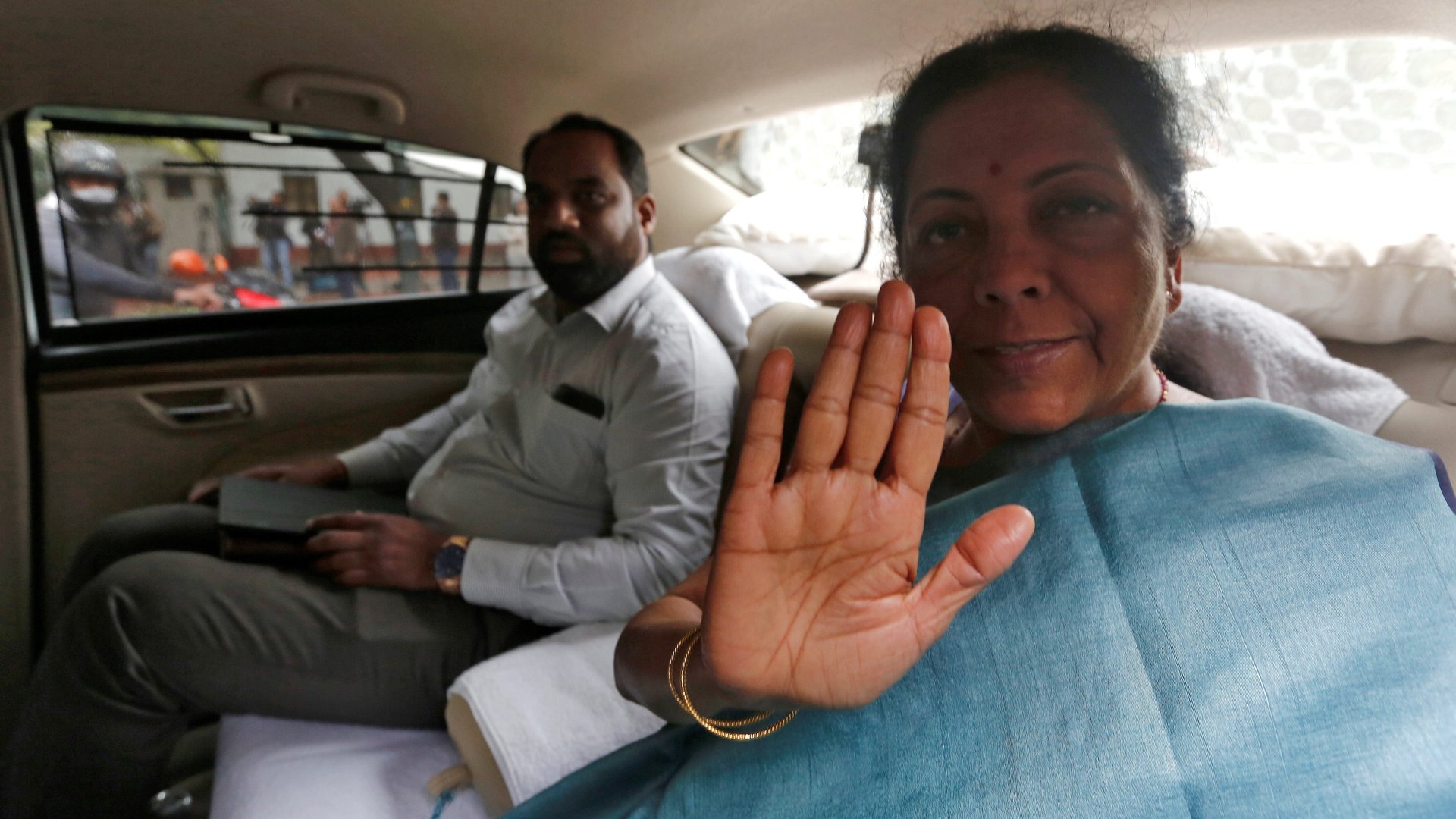Budget 2021: Three charts that show the alarming state of India’s economy
Indian finance minister Nirmala Sitharaman had to walk a tightrope today (Feb. 1) as she presented the Narendra Modi government’s ninth union budget at a time when the country’s economy is facing its worst contraction since 1952, a once-in-a-century pandemic is still out of control, and unemployment is at a record high. And she bit the bullet.


Indian finance minister Nirmala Sitharaman had to walk a tightrope today (Feb. 1) as she presented the Narendra Modi government’s ninth union budget at a time when the country’s economy is facing its worst contraction since 1952, a once-in-a-century pandemic is still out of control, and unemployment is at a record high. And she bit the bullet.
The Indian government has set a fiscal deficit target of 9.5% of gross domestic product (GDP) for the financial year ending March 2021 (FY21). Fiscal deficit refers to the difference between the government’s expenditure and revenues.
In February last year, the government had estimated its fiscal deficit for FY21 would be at 3.5%. Though the coronavirus pandemic caught the government off guard, 9.5% is way higher than what economists had anticipated keeping in mind the need for higher spending to spur the economy. This will be the highest fiscal deficit for India since at least the economic liberalisation in 1991.
For the following year, FY22, the government hopes to bring down the fiscal deficit to 6.8% of the GDP.
“We plan to continue with our path of fiscal consolidation, and intend to reach a fiscal deficit level below 4.5% of GDP by
Borrowings at the cost of the Indian economy
The finance minister said the gross borrowing from the market for FY22 will be around Rs12 lakh crore ($18.3 billion).
The government had in May increased its gross market borrowing for the current financial year ending in March 2021 by more than 50% to Rs12 lakh crore from the earlier budgeted Rs7.8 lakh crore.
In her speech, Sitharaman said that for this year, the government needs an additional Rs80,000 crore for which the government will approach the market in the next two months.
The finance minister is confident that this huge borrowing would not be a concern at the moment. “We hope to achieve the consolidation by first increasing the buoyancy of tax revenue through improved compliance, and secondly, by increased receipts from monetisation of assets, including public sector enterprises and land,” Sitharaman said.
The economic survey had suggested India must borrow more to push infrastructure development just as kings used to build palaces in times of a downturn. The country’s ability to spend substantially more on infrastructure creation will generate higher demand in the economy.
Is the Indian economy on the right path?
All the increased spending is being done with one goal in mind: to put the Indian economy on the path of revival.
The economic survey expects the Indian economy to grow 11% in real terms (adjusted for inflation) during FY22. The International Monetary Fund (IMF) estimates India’s economy to grow 11.5% during the same period.
However, the economic survey also stated that the economy will take at least two years to reach pre-pandemic levels. For instance, the expected growth of 11% indicates that the country’s GDP in 2021-22 will be at Rs149.2 lakh crore—merely 2.4% more than the GDP of Rs145.7 lakh crore in 2019-20.